If you’re looking to purchase one of Yamaha’s best-performing mid-range outboards, then you should definitely check out Yamaha’s line of VMAX SHO® engines. Short for “Super High Output”, these Yamaha outboards boast a number of great performance and design features that separates it from the competition.
Tested by top-ranked tournament anglers, commercial boaters, and recreational boaters alike, V MAX SHO® outboards have been one of the top-sellers among all Yamaha outboard motors since their inception in 2015.
To fill you in on everything you need to know about the line of Yamaha SHO® outboards, we’ll look at the following topics:
- What is V MAX SHO® Technology?
- The Best Features of Yamaha’s VMAX SHO® Outboard Motors
- Current list of Yamaha VMAX SHO® models
- What do Yamaha SHO® motors need for maintenance?
What is V MAX SHO® Technology?
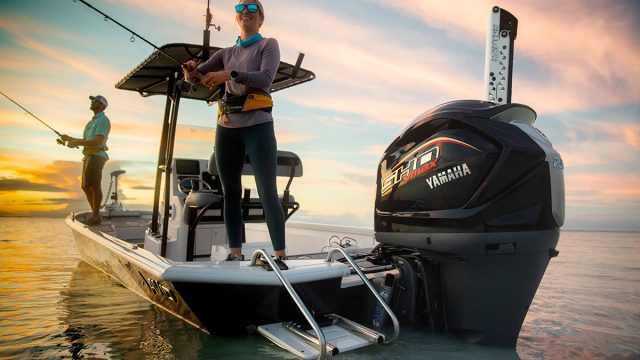
Yamaha’s line of VMAX SHO® are built with efficiency in mind. From their super high-performance designs, impressive torque curve, and excellent hole shot acceleration, V MAX SHO® provides an improved experience out on the water versus Yamaha’s standard line of outboards.
First, the V MAX SHO® technology uses up to 40% less fuel than carbureted two-strokes. This fuel economy is certainly appreciated by cost-conscious boaters and means more time to enjoy out on the water.
Second, this great fuel economy doesn’t mean reduced overall performance. In fact, the V MAX SHO® is up to 4 seconds (2 mph) faster than other competing outboard brands. This midrange power and response is due to lightweight designs, tournament-tested reliability, coupled with a quieter operation.
Best of all, V MAX SHO® gives you the ultimate in control with a responsive throttle. Bot the long-track intake system and resonator work together to improve throttle response.
Yamaha’s V MAX SHO® technology is currently available for In-Line 4 or V6 designs.
How does the performance of Yamaha SHO® outboards differ from other Yamaha models?
To see how the V MAX SHO® outboards stack up to Yamaha’s standard line of outboard motors, consult the following specs for the VF175 and F175 models:
|
Model |
VF175 |
F175 |
|
Engine Type |
Inline 4 |
Inline 4 |
|
Displacement |
2.8L |
2.8L |
|
Bore x Stroke |
96 x 96.2mm (3.78 x 3.79in) |
96 x 96.2mm (3.78 x 3.79in) |
|
Prop Shaft Horsepower |
175 hp at 5500 rpm |
175 hp @ 5500 rpm |
|
Full Throttle RPM Range |
5000 ~ 6000 rpm |
5000 ~ 6000 rpm |
|
Alternator Output at W.O.T. |
50 Amp |
50 Amp |
|
Compression Ratio |
10.3:1 |
10.3:1 |
|
Fuel Induction System |
EFI |
EFI |
|
Weight † |
218 kg (480 lbs) – 222 kg (489 lbs) |
219 kg (483 lbs) – 221 kg (487 lbs) |
|
Spark Plug |
LFR6A-11 |
NGK-LFR6A-11 |
|
Alternator Output |
50 Amp |
50 Amp |
|
Engine Oil Capacity |
4.5L/4.3L w/without filter |
4.5L/4.3L |
|
Gear Ratio |
1.86:1 |
1.86:1 |
|
Shaft Length |
20″ – 25″ |
20″ – 25″ |
The Best Features of Yamaha’s VMAX SHO® Outboard Motors
To understand why Yamaha’s V MAX SHO® outboard motors are becoming the first-choice among both freshwater and saltwater boaters, let’s take a look at some of the most exciting features that comes with V MAX SHO® technology:
TotalTilt
To make trailering or trimming in shallow waters a cinch, Yamaha SHO® models feature TotalTilt functionality. Here’s how it works:
- With a double tap of the trim button, the outboard tilts from its current position to the tilt-limit setting (to either full up or tilt-limit setting, whichever is lowest).
- A double tap of the down toggle trims the outboard all the way down. By simply push of the tilt button, movement can be set anywhere in between.
- For onboard safety, a warning horn sounds before and during these operations.
TotalTilt eliminates the need to hold the trim button, making the perfect feature for trailering or trimming the outboard in shallow waters.
All-New Yamaha Battery Management System (BMS)
To meet today’d increased demand for on-board DC power, Yamaha’s Battery Management System (BMS) on V MAX SHO® outboards simplifies keeping your outboard running. Here’s some of the features of the BMS:
- Streamlined DC power systems for in twin-quint DEC engine configurations using the Helm Master® EX system.
- BMS requires only two starting batteries on triple through-quint installations to reliably and confidently start multiple outboards. The result is more room, a cleaner bilge, and less overall weight in the boat
- The battery charging capability of VMAX SHO® motors is raised from Yamaha’s comparable horsepower outboards to 50 to 70 amps – a 40% difference that greatly improves the boat’s power margins and extended life. For all-day adventures and extended use, the battery capacity is perfect for offshore boaters that was to stay out on the water as long as possible with complete peace of mind.
- Optional isolator lead to better charge house or trolling batteries.
New Classic and Sport Yamaha Analog Gauge Lines
Choose analog gauges in either Classic or Sport styles to provide accuracy and complete the stylish look of V MAX SHO® outboards. Both lines comes with four different combinations to better compliment many of today’s boats that use analog gauges. The following is a breakdown of all available gauge combinations:
Available in 4” size:
- 7000-rpm tachometer
- 50-mph or 75-mph speedometer
Available in matching 2” size:
- Fuel
- Trim
- Water pressure
- Voltmeter gauges
Current list of Yamaha VMAX SHO® models
There are several models of Yamaha SHO® outboard motors to choose from, offering an assortment of optimal horsepower and engine design. Choose between In-4 four-cylinder models or V6 designs with select models available with a 25-inch shaft.
Yamaha In-Line 4 V MAX SHO® Outboards:
- VF90LA | Yamaha Outboards 90HP VMAX SHO®
- VF90XA | Yamaha Outboards 90HP VMAX SHO®
- VF115XA | Yamaha Outboards 115HP VMAX SHO®
- VF115LA | Yamaha Outboards 115HP VMAX SHO®
- VF150XA | Yamaha Outboards 150HP V MAX SHO®
- VF150LA | Yamaha Outboards 150HP V MAX SHO®
- VF175XA | Yamaha Outboards 175HP V MAX SHO®
- VF175LA | Yamaha Outboards 175HP V MAX SHO®
Yamaha V6 4.2L 250 / 225 / 200:
- VF200XB | Yamaha Outboards 200HP V MAX SHO®
- VF200LB | Yamaha Outboards 200HP V MAX SHO®
- VF225LB | Yamaha Outboards 225HP V MAX SHO®
- VF250XB | Yamaha Outboards 250HP V MAX SHO®
- VF250LB | Yamaha Outboards 250HP V MAX SHO®
What do Yamaha SHO® motors need for maintenance?
Every outboard motor needs regular maintenance for optimal performance and longevity – and Yamaha’s line of V MAX SHO® are no exception. Thankfully, Yamaha designed V MAX SHO® engines for ease-of-maintenance that can be performed by amateur boaters and experienced marine mechanics alike.
Maintenance Intervals for Yamaha V MAX SHO® Outboards
Break-in Period
If you’ve purchased your new Yamaha V MAX SHO®, the first step in servicing your engine is the break-in period. The break-in period’s purpose is to properly seat and mate all of the engine’s fresh-from-the-factory internal components.
This initial process isn’t necessarily maintenance per se, but it is absolutely mandatory to ensure that your Yamaha outboard performs optimally AND preserves the warranty of your Yamaha outboard.
Breaking in your engine consists of operating your V MAX SHO® Yamaha outboard at several RPM ranges for several hour(s)-long intervals over the course of ten (10) cumulative hours. Here’s Yamaha’s recommendations for breaking in your outboard:
- 1st hour of operation: Operate the engine at varying speeds up to 2,000 RPM or approximately ½ throttle
- 2nd hour of operation: Increase the engine speed until the boat is on plane (avoid full-throttle operation), then back off on the throttle while keeping the boat at a planing speed.
- 8 remaining hours of operation: Operate the engine at any speed. Avoid operating at full throttle for more than 5 minutes at a time.
After the 1st 10 hours of operation, you can operate your outboard normally.
Initial Maintenance
Once you’ve broken in your Yamaha V MAX SHO®, the initial maintenance period occurs at 20 hours of service or 3 months of ownership – whichever comes first.
The initial 20-hour service interval features many easy-to-perform service items that you’ll have serviced throughout the lifespan of your V MAX SHO® outboard. Serving as a checkup for any developing issues with your Yamaha outboard after break-in, the first 20 hour maintenance interval provides your first look inside the engine to look for common issues, especially fouled spark plugs and engine oil that will certainly need to be replaced and replenished.
(See checklist below for a full list of maintenance items.)
Recurring Maintenance Intervals
After your initial 20 hours of service maintenance interval, your maintenance intervals begin to lengthen. While it’s a good best-practice to regularly service your Yamaha VMAX SHO® according to these intervals, it never hurts to regularly inspect your engine – particularly after observing any engine issues out on the water or after heavy usage. This includes:
- Operating at high RPMs
- Transporting heavy loads
- Saltwater versus freshwater operation
- Frequent stops and starts
The following maintenance intervals for your Yamaha V MAX SHO® are recommended for regular usage at a medium-loaded boat with an average cruising speed between 3,000 – 4,000 RPMs:
- 100 Hours (or 1 Year of Use)
- 300 Hours (or 3 Years of Use)
- 500 Hours (or 5 Years of Use)
- 1,000 Hours (or 10 Years of Use)
Bear in mind that these service intervals are recurring. This means that once you’ve reached 500 hours, the next intervals repeat throughout the lifespan of your engine.
Depending on your usage (recreational or commercial, frequent usage versus a few times a season), you can expect to service your engine more often than these recommended guidelines. However, these maintenance guidelines are a good starting point to prevent serious issues in the future, especially for engine oil and lubrication.
Due to the long-term durability of Yamaha outboard motors, the average lifespan of Yamaha outboard motors can range up to 2,000 – 3,000 hours before needing a major service overhaul performed by a professional marine mechanic and/or authorized Yamaha dealer.
(See the checklists below for a list of all required maintenance items.)
Yamaha V MAX SHO® Service Interval Checklist
The following checklists are a handy reference to help boater service their Yamaha V MAX SHO® outboard. Click on the following links to be redirected to PartsVu’s massive library of Yamaha parts or choose all-in-one service kits from YamahaOutboardMaintenance (see next section).
20 Hour Service (At 20 Hours or 3 Months)
- Perform a Visual Inspection
- Change Engine Oil
- Replace Engine Oil Filter
- Replace Fuel Filters
- Change/Inspect Spark Plugs
- Change Lower Unit Gear Oil
- Replace Lower Unit Seal (if necessary)
- Inspect/Grease Propeller
- Replenish Grease Points
100 Hour Service (Every 100 Hours or 1 Year)
- Perform a Visual Inspection
- Change Engine Oil
- Replace Engine Oil Filter
- Replace Fuel Filters
- Change/Inspect Spark Plugs
- Change Lower Unit Gear Oil
- Replace Lower Unit Seal (if necessary)
- Inspect/Grease Propeller
- Inspect/Replace External Anodes
- Inspect/Replace Thermostats
- Replenish Grease Points
300 Hour Service (Every 300 Hours or 3 Years)
- Perform a Visual Inspection
- Change Engine Oil
- Replace Engine Oil Filter
- Replace Fuel Filters
- Change/Inspect Spark Plugs
- Change Lower Unit Gear Oil
- Replace Lower Unit Seal (if necessary)
- Inspect/Grease Propeller
- Inspect/Replace External Anodes
- Inspect/Replace Thermostats
- Replenish Grease Points
- Inspect/Replace Fuel Pump
- Replace Impeller/Water Pump Housing
500 Hour Service (Every 500 Hours or 5 Years)
- Perform a Visual Inspection
- Change Engine Oil
- Replace Engine Oil Filter
- Replace Oil Control Valve Filter
- Replace VST Filter
- Replace Fuel Filters
- Change/Inspect Spark Plugs
- Change Lower Unit Gear Oil
- Replace Lower Unit Seal (if necessary)
- Inspect/Grease Propeller
- Inspect/Replace External Anodes
- Replace Internal Anodes
- Inspect/Adjust Valve Clearance
- Inspect/Replace Thermostats
- Replenish Grease Points
- Inspect/Replace Fuel Pump
- Replace Impeller/Water Pump Housing
1000 Hour Service (Every 1,000 Hours)
- Perform a Visual Inspection
- Change Engine Oil
- Replace Engine Oil Filter
- Replace Oil Control Valve Filter
- Replace VST Filter
- Replace Fuel Filters
- Change/Inspect Spark Plugs
- Change Lower Unit Gear Oil
- Replace Lower Unit Seal (if necessary)
- Inspect/Grease Propeller
- Inspect/Replace External Anodes
- Replace Internal Anodes
- Inspect/Adjust Valve Clearance
- Inspect/Replace Thermostats
- Replenish Grease Points
- Inspect/Replace Fuel Pump
- Replace Impeller/Water Pump Housing
- Replace Timing Belt
- Replace Exhaust Guide and Manifold
All-In-One Service Kits from YamahaOutboardMaintenance

YamahaOutboardMaintenance.com offers the simplest way for Yamaha V MAX SHO® owners to perform their own service by offering all-in-one service kits.
These Yamaha service kits feature only Genuine Yamaha OEM parts, meaning that you’ll not only get optimal performance that can’t be found in aftermarket parts, but also preserve your warranty coverage (including Yamaha Extended Service coverage). Choose the following service kits
To find the right Yamaha outboard service kit for your application, select the model and year of your Yamaha outboard, then click Submit. From there, you’ll simply select your service interval and, if relevant, your preferred engine oil weight.
In just a few clicks, you’ll assemble the correct Yamaha outboard service kit needed for your specific engine, based on where you are in your Yamaha outboard maintenance schedule. No matter the Yamaha outboard maintenance task, YamahaOutboardMaintenance.com provides everything you need right in the box.
Kits include all necessary Yamaha products required for the service interval at hand:
- Yamaha fuel filters
- NGK spark plugs
- Yamaha marine anodes
- Yamaha water pump repair kits
- Yamaha impellers
- Yamalube engine oil
- Yamaha gear lube oil pump
- Yamalube marine gear lube
- Yamaha oil filters
- Yamaha thermostats
- Yamaha outboard lower unit drain gaskets
- Yamaha 10 Micron Marine fuel/water separating filter
- And more
Our mission is to allow you to easily maintain your Yamaha VF outboard engine with Yamaha OEM parts. Our Yamaha service kits make the job at hand easy and convenient helping to make sure your Yamaha outboard achieves top performance for years to come. Everything you need to for your service interval is in the box
Now that you’ve got a comprehensive look at what the Yamaha VMAX SHO® offers, you should know what YamahaOutboardMaintenance.com has everything you need to perform regularly-scheduled maintenance and keep your boat in the water all season long. From in-depth resources that covers everything you need about specific Yamaha models to best-practices for ongoing maintenance of all Yamaha models, we want you to have an outstanding ownership experience of your Yamaha outboard.
To find more Yamaha outboard maintenance articles and resources, general boating information, and interviews with fascinating people across the marine world, visit PartsVu Xchange. Also, check out PartsVu Xchange Talks Boating—a weekly podcast featuring some of the industry’s most interesting people.
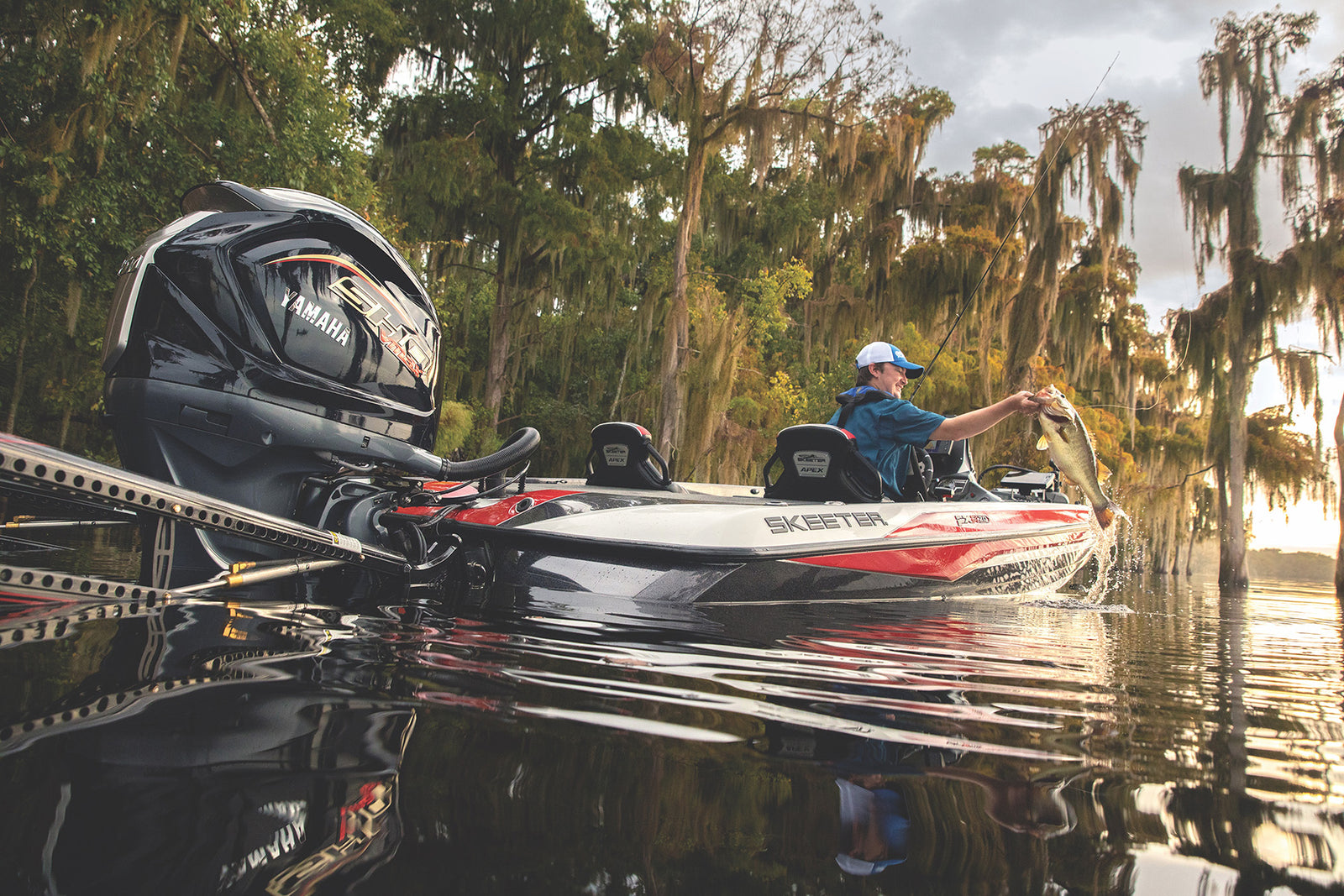

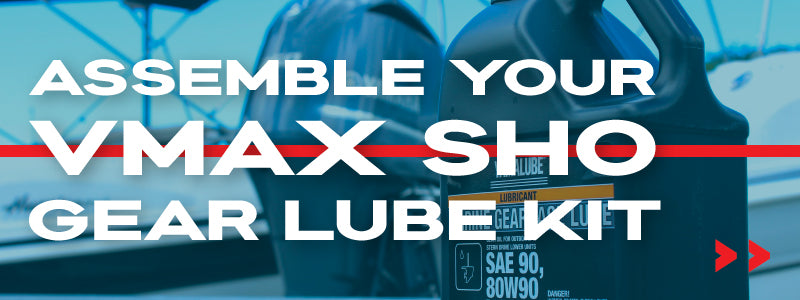

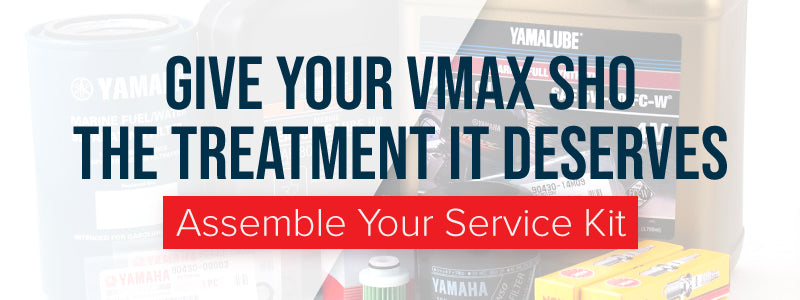
1 comment
My new 2025 250 sho doesn’t have an hour meter.
Whats the best way to know the hours.
I really want to keep up with this.
Thank you
———
Yamaha Outboard Maintenance replied:
Hi Hubble,
Congratulations on your new 2025 Yamaha 250 SHO! I understand your concern about not having an hour meter, as it’s important to track engine hours for maintenance and longevity. Here are a few ways you can track your engine’s hours:
1. Yamaha Command Link Display: Many Yamaha outboards, including the SHO models, are compatible with the Yamaha Command Link system. If your boat has this system, you should be able to access engine data, including hours, directly from the display. If you don’t have the Command Link system, you might want to consider adding it if you plan to keep track of other performance data as well. 2. Portable Hour Meters: If your boat doesn’t have an integrated hour meter, you can purchase a portable hour meter. These devices are easy to install and connect to your engine’s ignition system. They will track hours and can be transferred between different boats or engines if needed. 3. Yamaha’s Service Shop: If you’re unsure or want to get an accurate reading, your Yamaha dealer or service center may be able to hook up a diagnostic tool to check the current engine hours for you. 4. Smartphone Apps & Marine Tech Devices: There are some apps and wireless monitoring systems available that can connect to your engine and track usage hours. Devices like the Yamaha Helm Master EX or other Bluetooth-enabled systems can send data directly to your phone, including engine hours. Let me know which option works best for you, and I hope you’re able to stay on top of the maintenance schedule for your 250 SHO!Best, Markine D